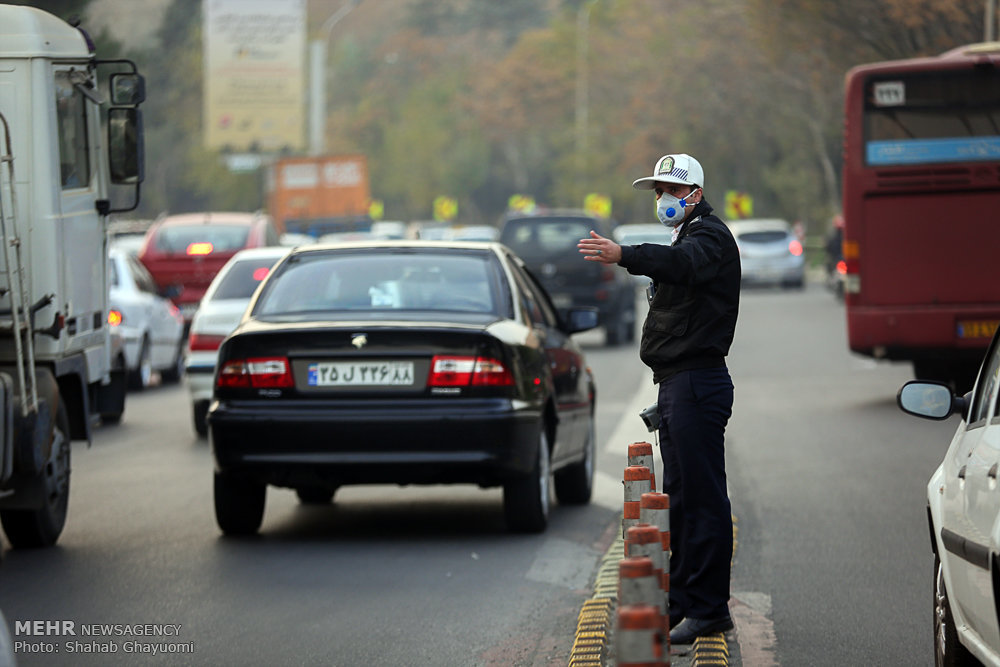Flouting the law aggravating air pollution, killing thousands

TEHRAN —The winter is coming and once more days of choking smog are awaiting city dwellers in metropolises of Iran.
A great deal of air pollution in Tehran and other big cities is blamed on a phenomenon called inversion.
Inversions occur during the winter months when normal atmospheric conditions (cool air above, warm air below) become inverted. Inversions trap a dense layer of cold air under a layer of warm air. The warm layer acts much like a lid, trapping pollutants in the cold air near the earth.
Wintertime inversions are a common event in metropolises. Extended inversions can lead to the high levels of fine particles (PM2.5). These high pollutant levels raise significant health and air quality issues, especially on days when the pollutant concentrations exceed the air quality indices.
One of the most important things impacted by an inversion layer is smog. This is the brownish-gray haze that covers many of the world’s largest cities and is a result of dust, auto exhaust, and industrial manufacturing.
Deaths linked with unhealthy environment
Tehraners as well as many other citizens living in cities of Tabriz, Ahwaz, and Isfahan feel suffocated by the choking smog at the onset of cold seasons.
An estimated 12.6 million people died as a result of living or working in an unhealthy environment in 2012 – nearly 1 in 4 of total global deaths, according to estimates from World Health Organization (WHO) published in March 2016.
In Iran around 33,000 people die each year because they are exposed to unhealthy environment.
As much as 24 percent of global diseases are caused by environmental exposures. Environmental risk factors, such as air, water and soil pollution, chemical exposures, climate change, and ultraviolet radiation, contribute to more than 100 diseases and injuries.
In terms of air pollution according to another report released by WHO, in 2012 around 7 million people died - one in eight of total global deaths – as a result of air pollution exposure. As per another report, more than 5.5 million people worldwide are dying prematurely every year as a result of air pollution making it the fourth-leading cause of death worldwide. The data was compiled as part of the Global Burden of Disease project.
Since 2015, Iran’s Ministry of Health has been calculating the number of deaths linked to air pollution. Based on the figures given by Abbas Shahsavani, a ministry representative who is in charge of air pollution committee, some 12,798 deaths in 25 cities of Iran with a population of 30 million are attributed to air pollution in 2015.
Shahsavani further said that in Tehran alone some 4,810 deaths occurred in 2016 are attributed to air pollution. That was while based on WHO guidelines the PM2.5 must stand at 10 micrograms per cubic meter air annually in Iran it stands at 31.1 micrograms per cubic meter air which is pretty high.
What contributes to air pollution?
Most of the air pollution results from the burning of fossil fuels, such as coal, oil, natural gas, and gasoline to produce electricity and power the vehicles.
After years of suffering highly polluted autumn and winter it is a common knowledge to citizens that vehicles, most significantly clunkers including taxis, buses, and trucks, and also carburetor motorcycles, in addition to power plants, factories, and mines established in close proximity of the cities are the main pollution sources in the country.
It is not lack of knowledge or even inadequate laws that has contributed to such high levels of air pollution.
The clean air bill which turned into a law last October has mandated some 14 responsible organizations and ministries including ministries of oil, interior, culture, industry, intelligence, transport, science, economic affairs, education, justice, presidential directorate executive affairs, central bank, management and planning organization, and Department of Environment to regulate pollutant industries and other factors contributing to air pollution.
What is actually impeding substantial progress in abating air pollution is budget deficiency, lack of professional integrity, mismanagement, and shortsighted and in some cases misguided policies seeking short term benefits or results and on top of that breaking the law to the advantage of a small minority.
Substandard automobile industry
For one, Iran’s automobile industry is failing to live up to international standards in manufacturing low-emission vehicles. Although the industry ministry and car manufacturers are legally bound to observe the law in producing clean and eco-friendly vehicles in practice they ignore or fail to meet the standards.
As explained by Mehdi Nikdar, head of the transport fleet and fuel management headquarters affiliated with the transport ministry, all car manufacturers are obligated to scrap a car in exchange for each car they produce.
However, despite the fact that some 1.4 million cars are being produced domestically per annum the manufacturers refuse to follow the law and that’s why only 350,000 cars were scrapped last year.
“Some 2 million cars were scrapped over the past 10 years, but the remaining 1.2 million clunkers which will certainly increase every year will also take another 10 year to be scrapped which is too long,” Nikdar regretted.
Only those who import cars are actually scrapping clunkers; car importers are required to scrap 400,000 clunkers for importing 75,000 cars but once the government decides to temporarily reduce or halt car import the number of cars being scrapped will significantly decrease, and that’s where the problem lies, Nikdar added.
Vehicles are recognized as the preliminary culprits of air pollution. There are adequate laws authorizing the responsible organizations to track down pollutant vehicles and either fix them or omit them. But what seems to be real problem is flouting the law by those who are after short-term results regardless of the health threats posed to the public.
MQ/MG

Leave a Comment